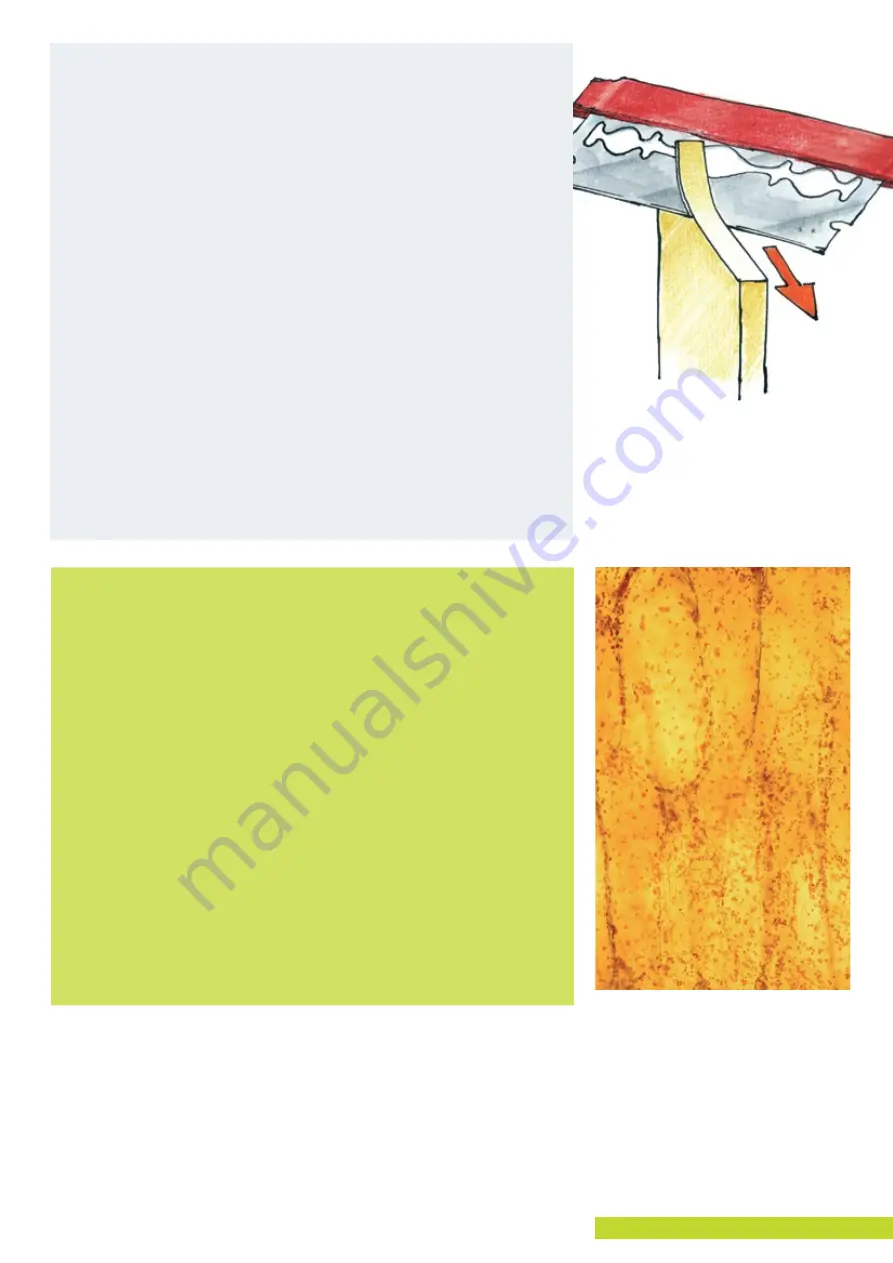
Red and Ripe
You can find different shaped chromoplasts in the fruit peels of the tomato or
the bell pepper, for example. Even the orange color of a carrot is produced by
chromoplasts. To prepare the object, you will need:
• a slide and a cover slip
• the pipette and water
• a razor blade (see page 11)
• the tweezers
• a kitchen knife
• a tomato, bell pepper, or carrot
You won’t get far without properly slicing the object when preparing this slide
(see “Cutting, Part 1” on this page). Using the kitchen knife, cut out a piece
from the tomato (or another fruit or vegetable). It should be large enough
that you are able to comfortably hold it in your hand and then cut it. Place the
razor blade flat on the cutting surface and slowly cut toward yourself. Don’t
get discouraged if you don’t produce a usable cut the first time. It’s best to
always go ahead and make several cuts and place them into the water drop on
the slide using the tweezers. Usually, the cuts are thin enough along the edges
that you will be able to recognize individual cells clearly. There, you’ll probably
also be lucky and be able to make out the individual chromoplasts in the cells
as well. Depending on the object, they have a round, egg-shaped, or stretched-
out shape and are colored an intense red or orange.
Cutting, Part 1 — First Tips
Theoretically, the number of objects that you can look at with your microscope
is unlimited. However, all microscopic preparations must fulfill one condition:
They need to be thin enough so that light is able to pass through them. As a
rule, excessively thick specimens do not let enough let through and they also
usually contain several layers of cells on top of each other. This makes it very
difficult to see anything clearly.
Cutting is an art in and of itself, and the preparation of good, thin cuts is prob-
ably not going to come to you (or anyone else) right away. A bit of consola-
tion: Professionally prepared slides, including those that were used for many
pictures in these instructions, are not done by hand but rather with a special
device. So please don’t despair if you haven’t performed a master cut even on
the fifth try! With a little practice, you will soon begin to notch up your first
successful cuts.
Here are some tips for cutting (for more, see pages 38 and 42):
• Always use a sharp razor blade. Even an experienced hand won’t be able to
make good cuts using a dull blade. A dull blade will only lead to frustration
and poor cuts and be a waste of time.
• Of course, sharp razor blades also tend to injure skin. Use one of the two
possibilities shown on page 11 for protecting yourself from this by “taking the
edge off” one side of the razor blade.
• Always perform several cuts while you’re at it. Normally, your object is not so
large, so several sections will fit under the cover slip at once.
• When cutting, you should always be sure not to push the blade through
the object, but rather cut it by pulling. Otherwise, you may only end up with
squashed cell fragments under the cover slip.
How to make thin cuts using the razor blade.
Cells of a red bell pepper with many small chro-
moplasts
21
Summary of Contents for TK2 Scope
Page 1: ...Experiment Manual ...
Page 52: ......
















































